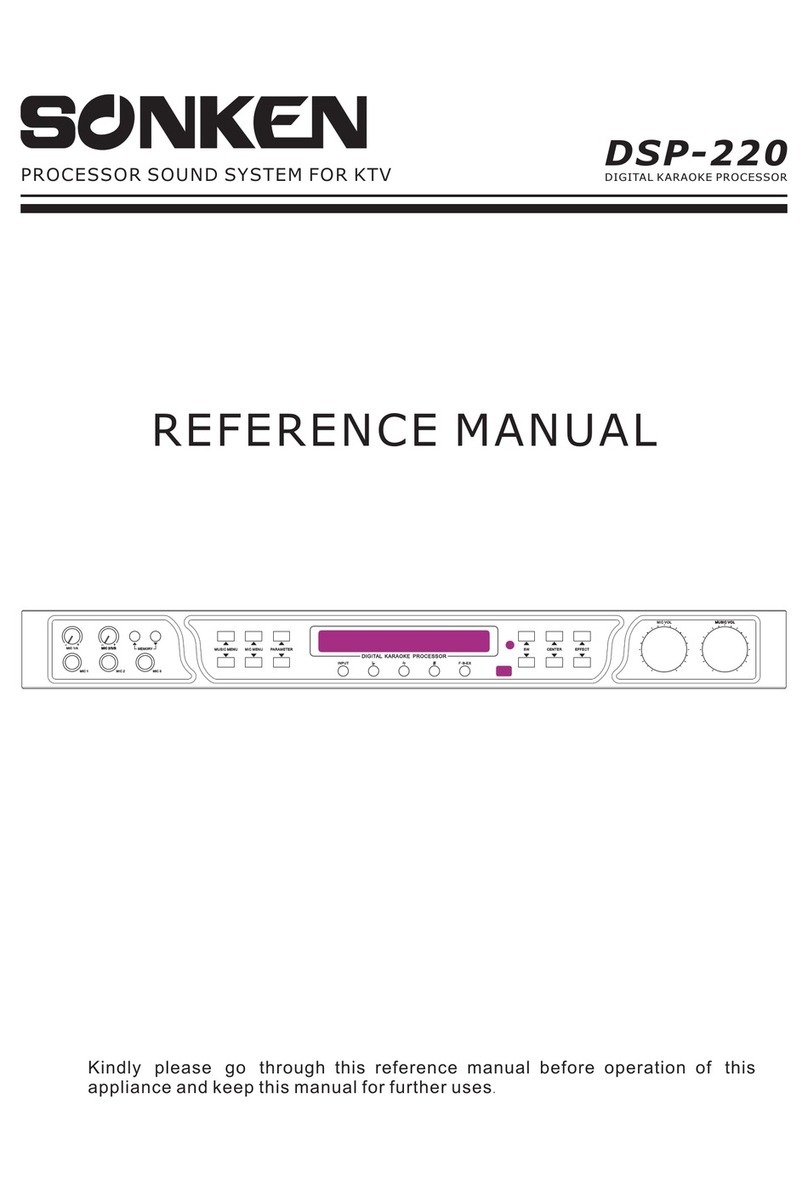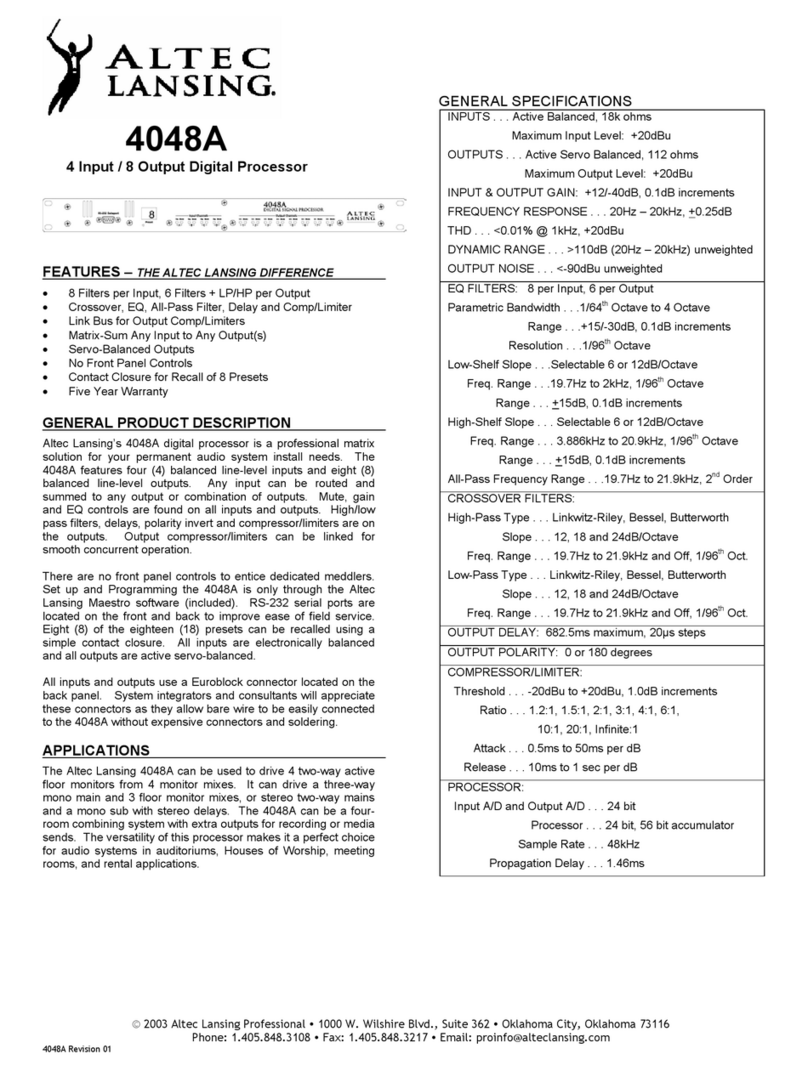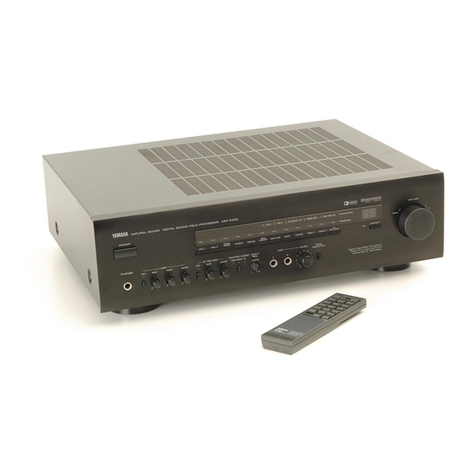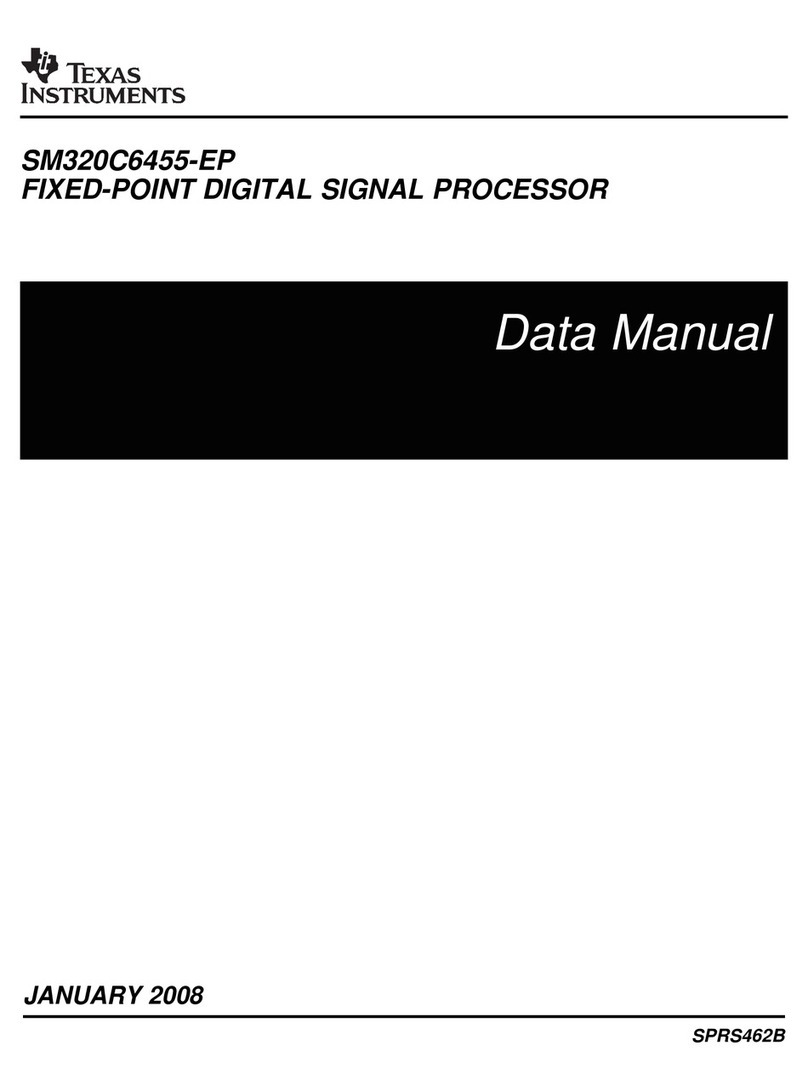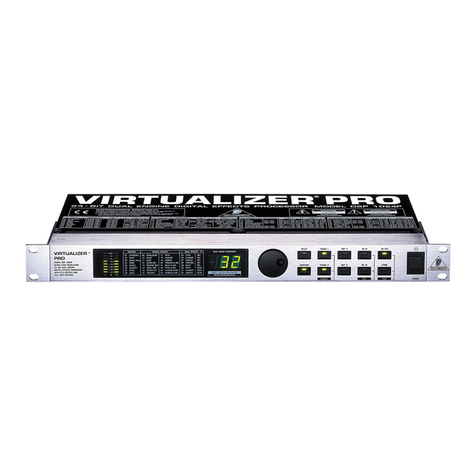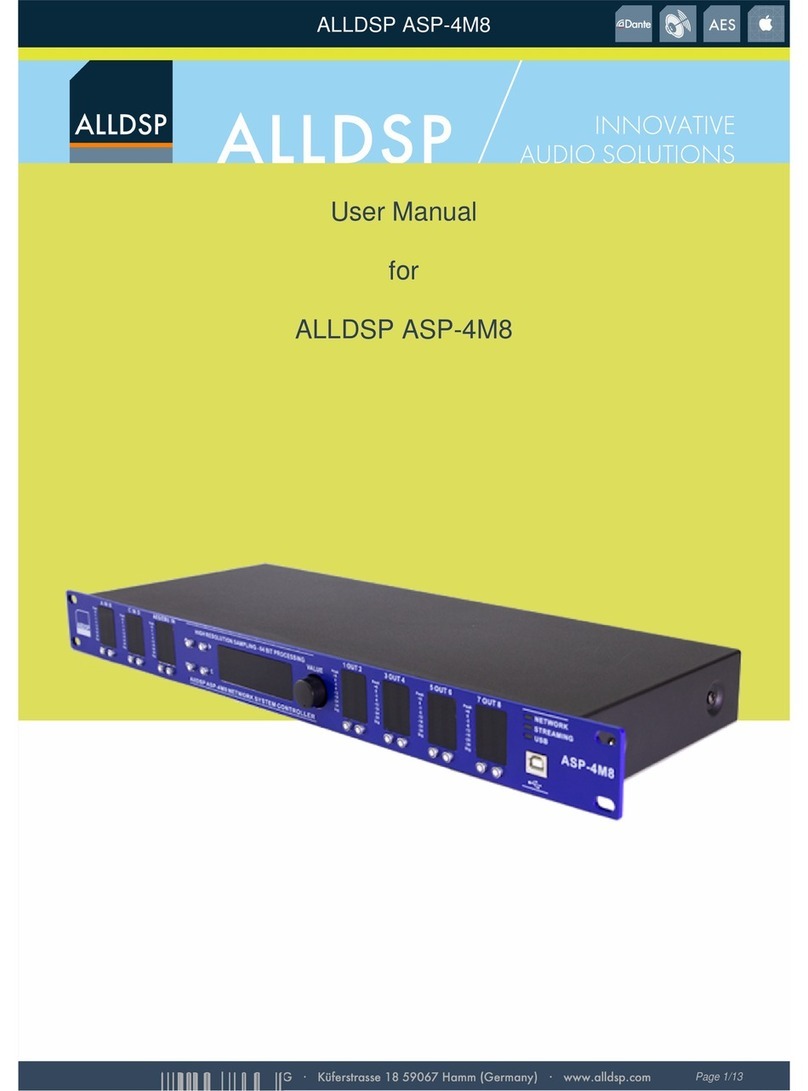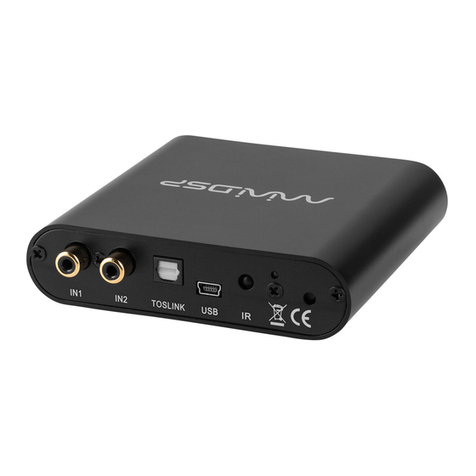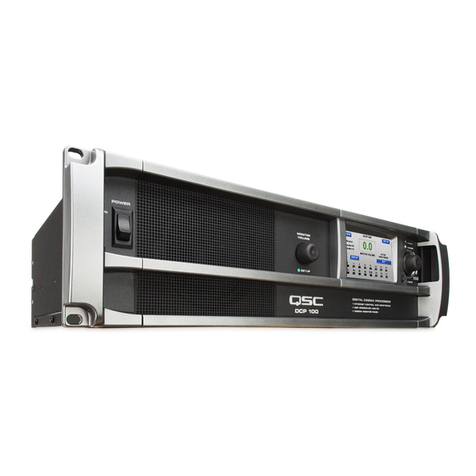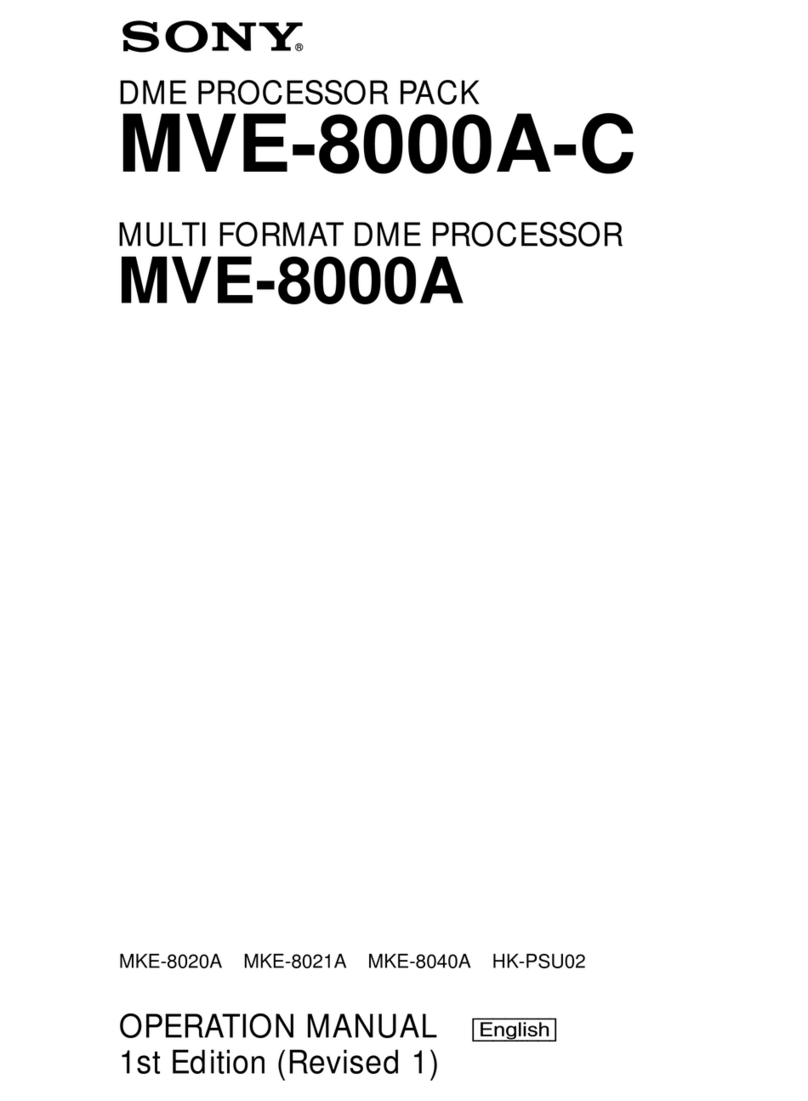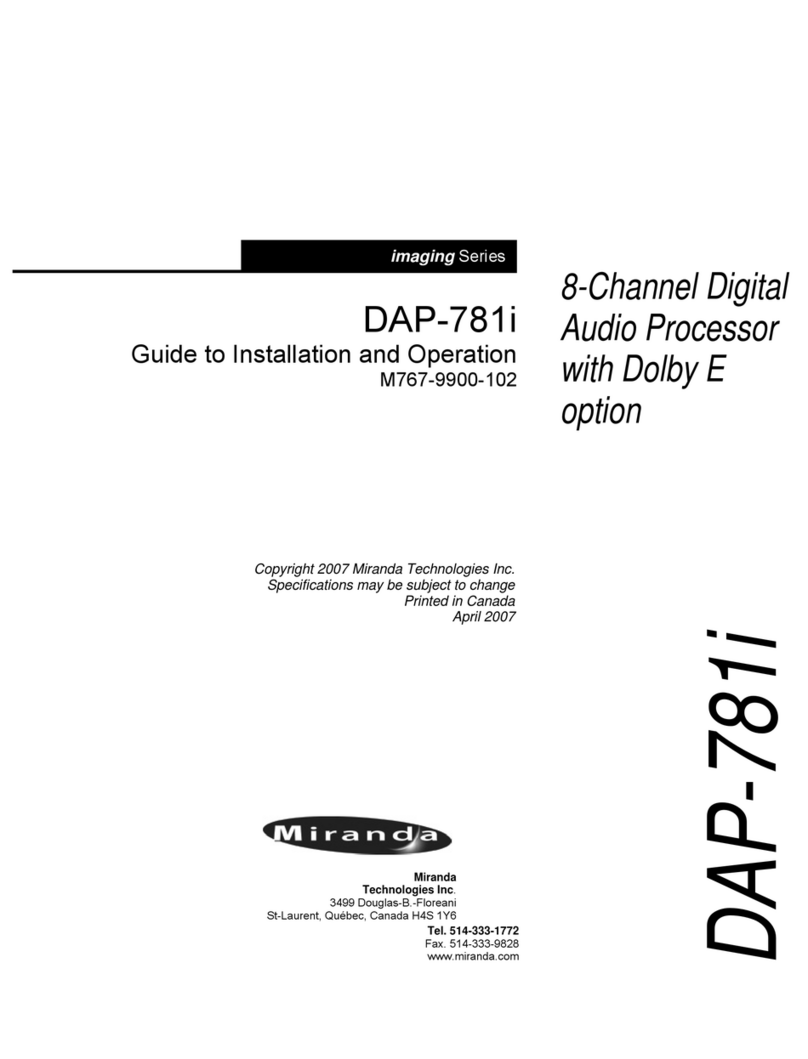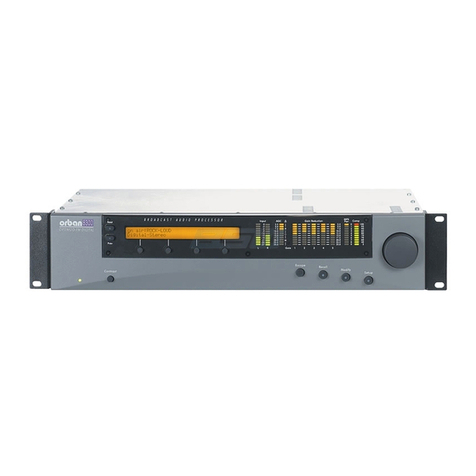epiphan Standalone VGA Grid User manual

Standalone VGA Grid
User Guide
Release 3.14.4
April 24, 2015
UG103-004

i
Terms and Conditions
This document, the Epiphan web site, and the information contained therein, including but not limited to the
text, videos and images as well as Epiphan System Inc.’s trademarks, trade names and logos are the property of
Epiphan Systems Inc. and its affiliates and licensors, and are protected from unauthorized copying and
dissemination by Canadian copyright law, United States copyright law, trademark law, international
conventions and other intellectual property laws.
Epiphan, Epiphan Systems, Epiphan Systems Inc., and Epiphan logos are trademarks or registered trademarks
of Epiphan Systems Inc., in certain countries. All Epiphan product names and logos are trademarks or
registered trademarks of Epiphan. All other company and product names and logos may be trademarks or
registered trademarks of their respective owners in certain countries.
Copyright © 2014 Epiphan Systems Inc. All Rights Reserved.
THE SOFTWARE LICENSE AND LIMITED WARRANTY FOR THE ACCOMPANYING PRODUCT ARE SET FORTH IN
THE INFORMATION PACKET OR PRODUCT INSTALLATION SOFTWARE PACKAGE THAT SHIPPED WITH THE
PRODUCT AND ARE INCORPORATED HEREIN BY REFERENCE. IF YOU ARE UNABLE TO LOCATE THE SOFTWARE
LICENSES OR LIMITED WARRANTY, CONTACT YOUR EPIPHAN REPRESENTATIVE FOR A COPY.
PRODUCT DESCRIPTIONS AND SPECIFICATIONS REGARDING THE PRODUCTS IN THIS MANUAL ARE SUBJECT
TO CHANGE WITHOUT NOTICE. EPIPHAN PERIODICALLY ADDS OR UPDATES THE INFORMATION AND
DOCUMENTS ON ITS WEB SITE WITHOUT NOTICE. ALL STATEMENTS, INFORMATION AND
RECOMMENDATIONS ARE BELIEVED TO BE ACCURATE AT TIME OF WRITING BUT ARE PRESENTED WITHOUT
WARRANTY OF ANY KIND, EXPRESS OR IMPLIED. USERS MUST TAKE FULL RESPONSIBILITY FOR THEIR
APPLICATION OF ANY PRODUCTS.
LIMITATION OF LIABILITY
UNDER NO CIRCUMSTANCES SHALL EPIPHAN BE LIABLE FOR ANY INCIDENTAL, SPECIAL, CONSEQUENTIAL,
EXEMPLARY OR OTHER INDIRECT DAMAGES THAT RESULT FROM THE USE OF, OR THE INABILITY TO USE, THIS
PRODUCT OR THE INFORMATION CONTAINED IN THIS DOCUMENT OR PROVIDED ON EPIPHAN’S WEB SITE,
EVEN IF EPIPHAN HAS BEEN ADVISED OF THE POSSIBILITY OF SUCH DAMAGES. IN NO EVENT SHALL EPIPHAN’S
TOTAL LIABILITY TO YOU FOR ALL DAMAGES, LOSSES, AND CAUSES OF ACTION RESULTING FROM YOUR USE
OF THIS PRODUCT, WHETHER IN CONTRACT, TORT (INCLUDING, BUT NOT LIMITED TO, NEGLIGENCE) OR
OTHERWISE, EXCEED THE AMOUNTS YOU PAID TO EPIPHAN DURING THE MOST RECENT THREE-MONTH
PERIOD IN CONNECTION WITH AMOUNTS WHICH YOU PAID FOR USING THIS PRODUCT.
INFORMATION AND DOCUMENTS, INCLUDING PRODUCT SPECIFICATIONS, PROVIDED IN THIS DOCUMENT OR
THE EPIPHAN WEB SITE ARE PROVIDED “AS IS”. SPECIFICALLY, BUT NOT WITHOUT LIMITATION, EPIPHAN DOES
NOT WARRANT THAT: (i) THE INFORMATION IS CORRECT, ACCURATE, RELIABLE OR COMPLETE; (ii) THE
FUNCTIONS CONTAINED ON THE EPIPHAN WEB SITE WILL BE UNINTERRUPTED OR ERROR-FREE; (iii) DEFECTS
WILL BE CORRECTED, OR (iv) THIS WEB SITE OR THE SERVER(S) THAT MAKES IT AVAILABLE ARE FREE OF
VIRUSES OR OTHER HARMFUL COMPONENTS. EPIPHAN SPECIFICALLY DISCLAIMS ALL REPRESENTATIONS,
WARRANTIES, AND CONDITIONS, EITHER EXPRESS, IMPLIED, STATUTORY, BY USAGE OF TRADE OR OTHERWISE
INCLUDING BUT NOT LIMITED TO ANY IMPLIED WARRANTIES OF MERCHANTABILITY, NON-INFRINGEMENT,
TITLE, SATISFACTORY QUALITY OR FITNESS FOR A PARTICULAR PURPOSE.
For additional terms and conditions, please refer to additional sections in this document.

ii
Thank You forChoosingEpiphan!
At Epiphan Systems Inc. (“Epiphan”), product function and quality are our top priority. We make every effort to
make sure that our products exceed your expectations.
Product Feedback
Your feedback is important! We regularly contact our customers to ensure our products meet your
performance and reliability requirements. We strive to continually enhance our products to accommodate your
needs. Please let us know how you think we can improve our products by emailing your suggestions to
info@epiphan.com.
Specifications
Go to the Professional Recording and StreamingSystems page of the Epiphan website to get the most recent
product specifications and additional information about Epiphan's Standalone VGA Grid.
Warranty
All Epiphan Systems products are provided with a 100% return to depot warranty for one year from the date of
purchase.
Technical Support
Epiphan’s products are backed by our professional support team. If you are having issues with your product,
please gather details about your system and contact our team by:
lEmailing support@epiphan.com
lLive chat via the link on our support site http://www.epiphan.com/support/
lPhone toll free at 1-877-599-6581 or call +1-613-599-6581
Be sure to include as much information about your problem as possible. Including:
lProblem description
lDetails of the video or audio source (type, connection, resolution, refresh rate, etc.)
lProduct serial number
lProduct firmware version (if applicable, from web admin interface)
Copyright © 2014 Epiphan Systems Inc. All Rights Reserved.

iii
What's New in Release 3.14.4?
Release 3.14.4 brings additional streaming functionality through Wowza Cloud to Standalone VGA Grid.
New Streaming Functionality
Live Streaming via Wowza Cloud
Using a simple connection code, the power of Standalone VGA Grid can easily be combined with the flexibility
and worldwide accessibility of the Wowza Streaming Cloud to universally stream from any live video source. See
Stream your video.
Resolved issues
Along with many smaller bugs fixed in release 3.14.4, the following issues have been resolved:
lA blue line appearing on the right side of the captured image when capturing from an SDI source at
720p
lInconsistent/inaccurate status results shown when attempting to extract a subset of a large, multi-track
file
Limitations and known issues
This section includes known issues or limitations that affect functionality or usability and ways that you can
work around these limitations.
Affecting encoding
lEncoding with MPEG-4 sometimes results in poor quality.
Workaround: From the channel's stream setup, increase the video bitrate to improve picture quality.
lVideo bitrate for MJPEG streams are approximately one and a half to two times the configured value.
Workaround: Verify the actual bitrate on the channel's channel status page and adjust until the correct
value is achieved.
lIn multiple source channel layouts, sources cannot overrun the top or left edges of the screen.
Workaround: Avoid using negative values for x and y axis coordinates.
lEncoding is unavailable if a branding logo is placed outside the frame size. (i.e. if the frame is 1024x768
and the logo is placed with an x-axis margin of 1200.)
Workaround:Always keep the branding logo within the frame.
lFor VGAsources only, some wide-mode resolutions are not correctly identified and result in a slightly
squished image (e.g. for a 1360x768 source, the detected resolution may be 1024x768).
Workaround:This issue is related to the video output hardware. Test your source to see if it exhibits the

iv
issue. If possible, avoid using wide-mode for VGAdisplays that exhibit this issue.
lWhen changing a channel's source from a local encoder source to an external encoder source, it's
possible to have an AAC audio encoding bitrate that is higher than the VGAGrid HD Encoder supports.
The resulting stream or recording may be unplayable and you may encounter a warning about variable
audio bitrate.
Workaround: When changing from local to external sources, delete the channel rather than changing
the source(s).Or, if re-using channels, ensure audio encoding bitrate forVGAGrid HD Encoders is set to
no more than 160 kbps.
lRecordings made with encoded streams from VGAGrid HD Encoders, using AACaudio and AVI file
format are not playable via VLC.
Workaround: Use another media player, such as Windows Media Player; choose a different audio codec;
or save recordings as .MP4 or .MOV files.
lSome cameras are sensitive to EDIDs and are not captured at optimal settings. When capturing from
these cameras, the HD signal may be down-sampled by the camera to an SD signal because the Epiphan
system doesn't share the EDID the camera expects for its HD signal.
Workaround:ContactEpiphan customer support for a custom EDID to resolve this issue.
lLimitation: When audio is enabled on an SDIsource where video is already being captured, it takes up
to 15 seconds for the system to detect the audio. Once detected, the audio is properly synchronized
with the video.
Workaround: Start the SDI signal with audio enabled, or check to ensure audio is detected before
streaming or recording.
Affecting streaming
lYou may see video artifacts when creating multiple source layouts where sources are partially
overlapped.
Workaround: Avoid overlapping sources in multiple source channels or disable the Keep Aspect Ratio
parameter.
Affecting recording
lYou may see video artifacts when creating multiple source layouts where sources are partially
overlapped.
Workaround: Avoid overlapping sources in multiple source channels or disable the Keep Aspect Ratio
parameter.
Affecting the web interface
lIt is possible to name two or more channels with the same value. Use of automatic file transfer and UPnP
is unpredictable if this occurs.
Workaround:Ensure each channel has a unique name.
lThe automatic file upload (AFU) file queue shows a maximum of 15 files, Newer 15 and Top of the list
buttons do not work. All files are transfered, even though they are not lists.
Workaround: Wait for the queue to have fewer files in the list.

v
Affecting other areas
lLimitation:Pearl fails to restart after improper shutdown (power cable removed or rapid power cycle).
LED and touch screen blink.
Workaround: Restart Pearl by removing the power cable for 20 seconds, then reattaching the cable and
powering the system back on.

vi
Table Of Contents
Thank You forChoosingEpiphan! ii
Product Feedback ii
Specifications ii
Warranty ii
Technical Support ii
Resolved issues iii
Limitations and known issues iii
Welcome 1
About this Guide 2
Standalone VGA Grid Overview 3
What's in the Box? 4
Front and back panel view for the VGAGrid 5
Quick Start 7
Step 1: Physical Setup and Power On 7
Step 2: Admin Discovery and Login 8
Step 3: Setup the Video Source 9
Step 4: Configure the Channel 11
Step 5: Testing the Stream 12
Step 6: Recording the Stream 13
What’s Next? 13
PART 1: Setup 14
1-1 Connect to the Admin Interface 15
Connect via DNS-based Service Discovery 15
Connect via the Epiphan Discovery Utility 16
Connect via Persistent Static IP Address 18
1-2 User Administration 19
Understanding User Privileges 19
Setting and Changing User Passwords 22
Removing User Passwords 23
Overcoming Lost Passwords 24
Configure LDAP 24
Changing the logged-in user 27
1-2 View system information 28
1-3 Configure Network Settings 29
Verify IP Address and MAC address 29
Configure a Static IP Address 30
Configure DHCP 32

vii
Tether to a Mobile Network 33
Perform Network Diagnostics 34
1-3 Configuration presets 36
Configuration presets overview 36
Configuration groups 39
Create a configuration preset 39
Apply a configuration preset 41
Apply theFactory default configuration preset 42
Update a configuration preset 43
Delete a configuration preset 44
Configurationpreset considerations 45
1-4 Configure Date and Time 49
Verify Date and Time Settings 49
Change the Time Zone 50
Configure Synchronized Time (NTP, PTP v1, and RDATE) 50
Configure a Local NTP Server 52
Manually Configure the Date and Time 52
1-5 Restrict Viewers by IPAddress 53
Examples 54
PART 2: Sources 57
2-1 Identify sources 58
Connecting sources 58
Previewing captured stream from sources 59
2-2 Configure a video source 60
Configure the video source's frame grabber parameters 60
Change a source name 64
2-3 Configure an audio source 66
Add an audio source to a channel 66
Configure audio encoding settings 67
Set audio volume 68
2-4 Fine-tune source configuration 70
Video is not centered on the screen (VGAsources only) 70
Video is too bright, too dark or washed out (VGAsources only) 71
Video looks squished (VGA sources only) 72
Remove the combing effect on images 74
Force the capture card to use a specific EDID 74
PART 3: Channels 78
3-1 Create and configure channels 79
Create a single source channel 79

viii
Create a multi-source layout 82
Delete a channel 86
Rename a channel 87
3-2 Identify a channel 88
3-3 Fine-tune channel configuration 89
Choose a codec to maximize your stream quality 89
Codec and file format compatibility 92
Adjust video quality 93
Upscale or downscale your video image 94
Control the matte (black bars) in the video output 95
Unstretch the output video 98
Limit the frame rate 99
Adjust key frame interval 100
3-4 Customize your channel 101
Add your logo and company information to your channel 101
Add a time stamp or text overlay to your channel 107
Select the background color for your channel 108
Add a customized background to a multiple source channel 109
3-5 Preview a channel 113
Preview a channel from the Info page 113
Preview a channel from the Status page 114
Preview all channels at once 114
PART 4: Stream 116
4-1 Stream your video 117
View available video formats 117
Choose a streaming option 118
Disable (and enable) streams for viewers 121
Restrict access to streams for viewers 122
Stream content using HTTPor RTSP 124
Configure streaming ports 125
Stream content using HTTP Live Streaming (HLS) 126
Stream content using UPnP 127
Stream content using a Content Distribution Network 133
Stream content using multicast streaming 144
4-2 Samples of stream settings 150
Streaming video content 150
Streaming slide content 151
PART 5: Record 152
5-1 Recorders 153
Add a recorder 153
Rename a recorder 154

ix
Change the channels recorded by a recorder 155
Delete a recorder 156
5-2 Create Recordings 157
Recording basics 157
Record a channel via the web interface 158
Record with a recorder via the web interface 160
Configure thetype and length of recording files 162
Close the current recording file while recording 164
Control recording with a mouse 165
5-3 File Maintenance 166
View the List of Stored Files 166
Rename Stored Files 167
Download Files Manually 168
Delete Files Manually 169
Pick Specific Tracks from a Multi-track Recorder File 170
5-4 File and recording transfer 172
Automatic file upload (AFU) overview 172
Configure the files included in AFU (part 1 of 3) 173
Enable and configure the frequency of AFU (part 2 of 3) 174
Configure AFU to an FTP server (part 2 of 3) 177
Configure AFU using RSync (part 2 of 3) 178
Configure AFU using CIFS (part 2 of 3) 179
Configure AFU to a secure FTP server (part 2 of 3) 181
Configure AFU using SCP (part 2 of 3) 183
Upload to an external USB drive 184
View the file upload log 191
5-5 Use the Local FTPServer 192
Configure the Local FTP Server 192
Downloading Files from the Local FTP Server 193
PART 6: View 196
6-1 View your video 197
View the live broadcast and retrieve stream URLs 197
Viewing with a web browser 200
Viewing with a media player 202
Viewing with UPnP 202
Viewing with Session Announcement Protocol (SAP) 204
PART 7: Maintenance 206
7-1 Mobile / Tablet Operator Interface 207
Connect to the tablet interface 207
Confidence monitoring using the tablet interface 209
Verify disk space via the tablet interface 211

x
Control recording via the tablet interface 211
Switch to the full admin interface 212
7-2 Power Down and System Restart 213
Restarting the Device via the Web Interface 213
Shutting down the Device via the Web Interface 214
Shutting down the Device Manually 214
7-3 Save and Restore Device Configuration 216
Save device configuration 216
Load a saved device configuration 217
7-4 Perform Factory Reset 219
Restore Factory Configuration via the Web Interface 219
7-5 Firmware Upgrade 221
Check for Firmware Updates 221
Install firmware 222
7-6 Support 225
Download logs and "allinfo" 225
Configure Remote Support 227
Disable Remote Support 228
7-7 Storage Disk Maintenance 230
Check disk storage space 230
Schedule disk check 231
Perform disk check 231
Rebuild or replace storage disks 232
Verify RAID storage 236
Read data from removed storage disks 237
7-8 Control with RS-232 / Serial Port 240
Connect and configure the RS-232 cable 240
Control the Standalone VGA Grid with RS-232 241
RS-232 / Serialport command examples 244
7-9 Control with HTTPCommands 246
HTTP command syntax 246
HTTP command examples 248
7-10 ConfigurationKeys forThirdParty APIs 250
System-level Settings Keys(Read-only) 251
System-level SettingsKey (Read/Write) 251
Recording Configuration Keys 252
HTTPServer Configuration Keys 252
IP-Based Access Control Configuration Keys 253
UPnP Configuration Keys 253
SAP Configuration Keys 254

xi
Frame Grabber Configuration Keys 254
Broadcast ConfigurationKeys 255
Channel Encoder ConfigurationKeys 255
Channel Logo Configuration Keys 257
Audio Configuration Keys 258
Stream Publishing Configuration Keys 259
RTSPAnnounce Configuration Keys (Publish Type 2) 259
RTP/UDPConfiguration Keys (Publish Type 3) 260
MPEG-TSConfiguration Keys (Publish Types 4 and 5) 261
RTMPPush Configuration Keys (Publish Type 6) 261
ContentMetadata Configuration Keys 261
7-11 Troubleshooting 263
PART 8: Releases and Features 266
Release 3.14.3 Features 266
Release 3.14.1 Features 266
Release 3.12 Features 268
Release 3.11 Features 269
Software and Documentation License 273
Environmental Information 277
FCC & CE Compliance Statement 277
Other Jurisdictional Issues 278
Submissions to Epiphan and Affiliated Servers 278
Third Parties and Links to Third-Party Web Sites 278
Miscellaneous 278
Enforcement of Terms and Conditions 279

Standalone VGA Grid User Guide Welcome
Welcome
Welcome, and thank you for buying Epiphan’s Standalone VGA Grid™. This guide will help you configure your
new system.
To get started, review the Standalone VGA Grid Overview and What's in the Box? sections. Next, a Quick Start
guide walks you through the basic steps to get a single video (and optional audio) source configured as a
streamable, recordable output from the Standalone VGA Grid.
Following the quick start section, a set of task-based procedures help you to tweak the system exactly how you
want it. These procedures are broken into seven categories: Setup, Sources, Channels , Stream, Record, View,
and Maintenance.
1

Standalone VGA Grid User Guide Welcome
About this Guide
Warnings are depicted as follows.
This is a warning.
Tips and Notes are depicted as follows.
This is a tip.
Throughout this guide there are situations where more than one solution will complete a task. In those cases
the guide describes the simplest or most common variation first.
2

Standalone VGA Grid User Guide Standalone VGA Grid Overview
Standalone VGA Grid Overview
Epiphan's VGAGrid allows you to capture, stream, and record audio and video from a large number of VGA,
DVI, HDMI, composite and component sources. It supports streaming to a large number of viewers using
industry-standard codecs such as H.264 and MPEG-TS. Supporting resolutions between 640×480 and
2048×2048, the VGAGrid is suitable for a broad range of applications.
This versatile system has a variety of options enabling you to create and configure any number of streaming
channels. You can choose to stream (or record) a single channel at once or a configuration of synchronized
channels with picture-in-picture or picture-with-picture multiplexing selections.
The VGAGrid comes in two styles to meet your needs:Networked and Standalone. The Standalone VGA Grid
captures video and audio through internal cards. Depending on the model it has 4 or 6 DVI source ports, 4 or 6
SDI source ports and 4 or 6 S-Video source ports. The latest hardware models(with SDIcapture) also support
HDMI and SDIaudio catpure. Encoding and synchronization of the stream is done locally on the Standalone
VGA Grid. The Networked VGAGrid has no internal capture cards, instead it uses VGAGrid HD Encoders to
capture and encode sources, sending the already encoded stream to the VGAGrid. Using external encoders
means the VGAGrid has less stress on its CPU so it can handle a greater number of inputs. HDMIaudio capture
and SDI video capture are not supported with Networked VGAGrid systems.
3

Standalone VGA Grid User Guide What's in the Box?
What's in the Box?
The Standalone VGA Grid is a 4U rackmount server with dimensions 522 mm (D) × 430 mm (W) × 176 mm(H)
(20.5” × 16.9” × 6.9”).
Latest Hardware Revision:
Standalone VGA Grid can now capture more HD content than ever before. The newest Standalone VGA Grids
comes with eight or twelve HD inputs (depending on the model). Half the inputs are for capturing from
DVI/HDMI/VGA sources while the other half are for SDI sources. As before there are also 4 or 6 S-Video ports.
With this combination of available input ports and applicable DVI, SDI or S-Videoadapters/converters you can
bring in signals from nearly any source. This hardware upgrade also provides audio capture support for HDMI
and SDI in addition to pre-existing support for 3.5 mm analog audio input ports.
Previous Hardware Revisions
Previous versions of Standalone VGA Grids came with four or six HD inputs (depending on the model). Many,
although not all, previous hardware revisions can support the latest software release.Use the Firmware
Upgrade feature to see if your device is upgradeable. Noteprevious hardware revisions do not support
HDMIaudio capture.
Unpacking the box
The following list applies only to new devices with the latest hardware revision.
1. 4 or 6 (depending on model) VGA to DVI-I cables
2. 4 or 6 (depending on model) HDMI to DVI-I adapters
3. 4 or 6 (depending on model) DVI-I to DVI-I cables
4. 4 or 6 (depending on model) composite to S-Video cables
5. 4 or 6 (depending on model) SDI cables
6. One Ethernet cable
7. Power cable
Image Name Description
VGA to DVI cable Connects a VGA source to the system’s DVI
port(s).
4

Standalone VGA Grid User Guide What's in the Box?
Image Name Description
HDMI to DVI adapter Connects an HDMI source to the system’s DVI
port(s).
DVI-I Single Link cable Connects a DVI source to the encoder’s DVI
port(s).
Composite to S-Video
cable
Connects a composite output from an analog
sources to the system’s S-Video port(s).
SDI Cable Connects anSDIsource to the system via
BNCconnectors.
RJ-45 Ethernet cable Connects the system to your network.
Front and back panel view for the VGAGrid
5

Standalone VGA Grid User Guide What's in the Box?
Table 1 Rackmount Standalone VGA Grid Front and Back Panel Descriptions
Label Name Description
Power Button (behind
door)
Unlock the door to reveal the power button.
Press to turn on; press and release to turn off the system.Press and
hold for 4 seconds for a forced system shutdown.
Reset (behind door) Unlock the door to reveal the reset button.
Cycles the power off then on, like a computer reset button.
Power LED Indicates the system is powered on.
Hard Drive LED Blinks when the system is recording or accessing the hard drive.
USB Ports (behind door) Unlock the door to reveal two USB ports.
For connection of external hard drives, flash drives, or control interfaces.
USB Ports For connection of external hard drives, flash drives, or control interfaces.
USB Ports For connection of external hard drives, flash drives, or control interfaces.
RJ-45 Ethernet Auto-sensing gigabit Ethernet 10/100/1000 Base-T network port.
Audio In (blue) Connect amplified line in audio sources to the system.
Audio In (pink) Connect unamplified microphone audio sources to the system.
Audio In (4 or 6) Connect audio sources to the system.
S-Video ports (4 or 6) Connect analog video sources (S-Video, composite, etc) to the system.
DVI-I Dual Link (4 or 6) Connect analog or HD video sources to the system.
SDIports (4 or 6) Connect digital SDI sources to the system.
6

Standalone VGA Grid User Guide Quick Start
Quick Start
This section helps you get up and running quickly with your Standalone VGA Grid.
lStep 1: Physical Setup and Power On
lStep 2: Admin Discovery and Login
lStep 3: Setup the Video Source
lStep 4: Configure the Channel
lStep 5: Testing the Stream
lStep 6: Recording the Stream
Before you get started, make sure you have:
lan HD source (i.e. a computer, a tablet, or a phone)
lthe appropriate cables or adapters to convert the output to DVI or SDI (if needed)
lideally, a network with Dynamic Host Configuration Protocol (DHCP)
la computer with a web browser connected to the same network (this is referred to as the “admin”
computer in the steps below)
loptionally, an audio source such as a microphone or the headphone jack from a laptop . Note that audio
signals sent overHDMI andSDI are supported in the latest hardware revision(s). If you have SDIports,
your system supports HDMIand SDI audio.
These instructions include steps for setting up and configuring audio. Skip these optional steps if
you do not want to configure an audio source at this time.
Step 1: Physical Setup and Power On
Complete the following steps to prepare and power on the system. Refer to the Front and Back Panel View
section for your system to locate the appropriate input ports.
1. Turn on your HD source and connect the output cable to a DVI-I or SDI port on the back of the system.
2. (optional) Attach a 3.5 mm audio cable from your audio source to the system’s motherboard audio input
port(blue port on the back of the system).
3. Connect the Ethernet cable to the Standalone VGA Grid. Connect the Ethernet cable to your network.
4. Attach the power cable to the system and plug it into a power source.
5. Unlock the front panel and press the power button to turn on the system.
7

Standalone VGA Grid User Guide Quick Start
6. Wait for the Standalone VGA Grid to complete the power up sequence. The power LED illuminates and
the hard drive LED flashes during start up.
Step 2: Admin Discovery and Login
The Standalone VGA Grid is managed from a web interface. This interface acts as a configuration utility and
system monitor. The first time you access the web interface you will not know the IP address of the system.
The steps below use DNS-based service discovery (a type of zero-configuration networking) to access the
system. Depending on the operating system on your admin computer you may need to install some software
before you can used DNS-based discovery.
This quick start is meant for systems that support DHCP and DNS, however if your system does not
support these mechanisms, refer toConnect to the Admin Interface and Connect via the Epiphan
Discovery Utility for alternative discovery mechanisms. Return to step 3 below you have
completed setting a static IP address for the Standalone VGA Grid.
Table 2 Installing Bonjour Print Services
System Action Needed
Microsoft Windows You must install Bonjour Print Services:
1. Use the following URL - http://support.apple.com/kb/DL999
2. Click Download.
3. Follow the system prompts to download and install the application.
MacOSX The Bonjour software used for service discovery is built in to the Mac OS. No special
actions needed.
Linux The Avahi implementation used for DNS-based discovery is shipped with most Linux
distributions. If necessary, check with your administrator to ensure you have the Avahi
package installed.
You are able to access the system web interface on the local network by specifying its serial number in a web
browser on your admin computer.
1. Find the system’s serial number. It is printed on a sticker on the back of the unit.
2. Type the following string into the address bar of your web browser on your admin computer (where
<serial> is the serial number of your Standalone VGA Grid):
http://<serial>.local/admin
For example: http://95dd40d5.local/admin
8
Table of contents
